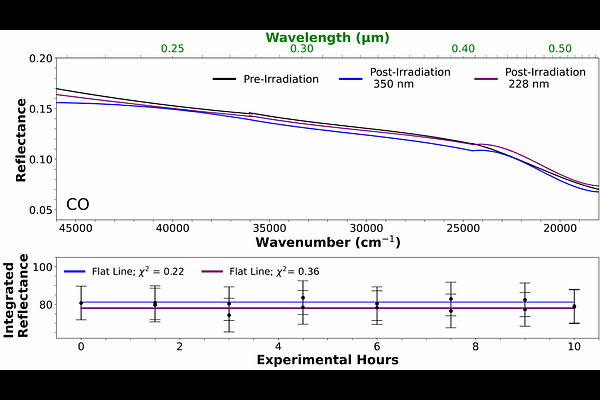Effects of Ultraviolet Radiation on Sub-Neptune Exoplanet Hazes Through Laboratory Experiments

Effects of Ultraviolet Radiation on Sub-Neptune Exoplanet Hazes Through Laboratory Experiments
Lori Huseby, Sarah E. Moran, Neil Pearson, Tiffany Kataria, Chao He, Cara Pesciotta, Sarah M. Hörst, Pierre Haenecour, Travis Barman, Vishnu Reddy, Nikole K. Lewis, Véronique Vuitton
AbstractTemperate sub-Neptune exoplanets could contain large inventories of water in various phases, such as water-worlds with water-rich atmospheres or even oceans. Both space-based and ground-based observations have shown that many exoplanets likely also contain photochemically-generated hazes. Haze particles are a key source of organic matter and may impact the evolution or origin of life. In addition, haze layers could provide a mechanism for lower-atmospheric shielding and ultimately atmospheric retention. Often orbiting close to M-dwarf stars, these planets receive large amounts of radiation, especially during flaring events, which may strip away their atmospheres. M-dwarf stars are known to have higher stellar activity than other types of stars, and stellar flares have the potential to accelerate atmospheric escape. In this work, we present results on laboratory investigations of UV radiation effects simulating two different stellar flare energies on laboratory-produced exoplanet hazes made under conditions analogous to water-world atmospheres. We find that both simulated flares altered the overall transmittance and reflectance of the hazes, and higher energy "flares" make those alterations more pronounced. On a larger scale, these laboratory-made hazes show potential signs of degradation over the simulated flaring period. Our results provide insight into the effects that stellar flaring events have on potential exoplanet haze composition and the ability for water-world-like exoplanets to retain their atmospheres.